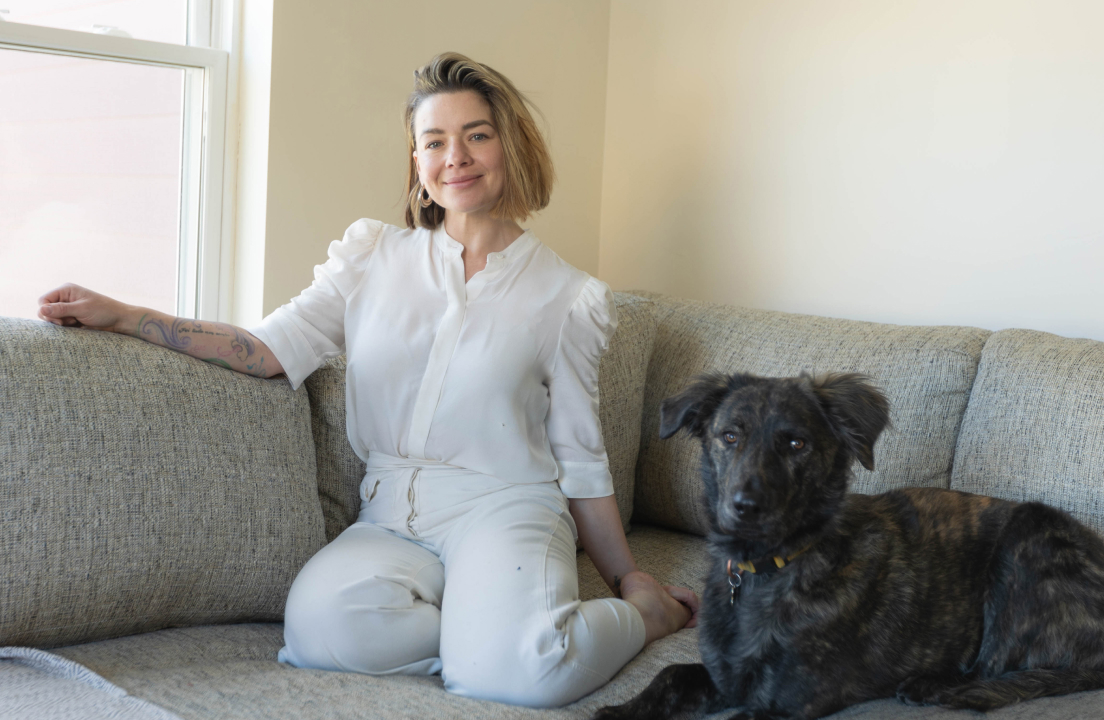T1D Guide
T1D Strong News
Personal Stories
Resources
T1D Misdiagnosis
T1D Early Detection
Research/Clinical Trials
Misdiagnosed with T2D for 10 Years: Did Doctors Cause Her Retinopathy?
In 2009, Mona Verma was misdiagnosed with type 2 diabetes at 36 years old in Toronto, Canada. By the time she was diagnosed correctly with type 1 diabetes in 2020 during the COVID-19 pandemic, she had endured a decade of very high blood sugar levels.

“I do think my South Asian ethnicity played a role in my misdiagnosis,” says Mona, looking back on those years of frustration.
According to a study from the American Diabetes Association’s Diabetes Care Journal, South Asian populations have a higher prevalence and earlier age of onset of type 2 diabetes and atherosclerotic cardiovascular diseases than other races and ethnic groups.
Changes in Vision
Initially, Mona went to the doctor for changes in her vision. Her primary care doctor was on vacation, so she saw the “substitute” doctor filling in.
“I was having trouble reading, and I was only 36!” Mona recalled. “The doctor just ran a blood test, and I left to wait for the results.”
Mona’s blood sugar came back at 576 mg/dL. “Unfortunately, you have type 2 diabetes,” the doctor said. Despite the high reading, Mona pushed back on the diagnosis. “That makes no sense to me,” she said. “I exercise. I eat pretty healthy. This doesn’t make sense.”
“Is there a family history of type 2?” the doctor asked.
“Yes,” Mona explained, “my uncle and my aunt have type 2 diabetes.”
“Well, that explains it,” said the doctor. “Family history typically dictates type 2, especially because you’re South Asian.”

Based on stereotypes and family history, Mona’s doctor didn’t even consider another possibility or the fact that her lifestyle habits and overall health did not add up to a type 2 diagnosis.
“My blood sugar was 576 mg/dL!” Mona said in frustration. “It’s not like I drank a soda right before the test. That should’ve triggered alarm bells and red flags from my doctor.”
Instead of insulin, he prescribed metformin and told her that they were not worried about her A1c
When Mona’s primary care physician returned from vacation, he met with her to provide a not-so-useful lecture on dessert. “Basically, just don’t eat sugars.”
“Well, I don’t have a sweet tooth, and I hardly eat sweets,” Mona replied.
While this should’ve activated more warning signs from her healthcare team, they sent Mona to a type 2 diabetes education clinic instead, which instructed patients to eat 100 to 150 grams of carbohydrates per meal, along with sample meal plans. “I thought that was an extremely high number of carbohydrates, but I thought, ‘Okay, here I go.’”
A1C Levels Matter
Despite metformin and her new “diabetes diet,” Mona’s blood sugar levels persisted to stay well above 250 mg/dL all the time — with an A1c fluctuating between 9 to 11 percent.

She was concerned, but her healthcare team wasn’t. “We’re not worried about your A1c,” her endocrinologist told her, “because you’re 36. Talk to me when you’re 50.”
This wasn’t good enough for Mona. As time progressed, she grew increasingly vexed that her blood sugar never came down below 200 mg/dL despite following their instructions perfectly.
The endocrinologist told her at every visit to simply eat less. Mona received no positive results, even though she exercised and followed an intense diet.
“At this point, I was eating the bare minimum, cooking all my own meals, prepping meals, counting every gram of carbohydrate and fiber, reading every nutrition label, keeping an eye on all the ingredients, and making every substitute possible in a recipe to ensure it was healthy,” said Mona.
She also went to the gym six days a week for two hours daily, but nothing seemed to lower her blood glucose levels. “And I was pretty fit,” Mona said. “I was doing an hour of cardio and an hour of weights every single day, and my blood sugar wasn’t coming down.”
Her endocrinologist blamed her. “You’re not trying. Try to lose another 10 pounds,” he said.
Then she started adding or subtracting other diabetes medications — this experiment (on her life) went on for years.
Mona lost more weight, and also her hair.
While she continued to lose weight without trying, Mona’s hair also began to fall out. “I could see through my hair,” she recalled. “It changed my hairline, but my doctor told me I have male pattern baldness and that my diabetes management was terrible.”

They added more pills to her regimen, but within the next two years, Mona developed a noticeable patch of baldness that her healthcare team blamed on stress.
Finally, her doctor suggested checking her insulin production.
Mona’s c-peptide level was extremely low. Unfortunately, even this didn’t trigger her team to consider that she had been misdiagnosed. Instead, they just concluded that she needed insulin. “Why insulin?” she remembered asking. “Why is my pancreas not producing a normal amount of insulin?”
They couldn’t explain it, but they sent her to the Diabetes Education Center for insulin education. At the same time, Mona started a ketogenic diet because she was desperate to get her blood sugar levels down. “It helped at first,” she recalled, “especially since they only gave me basal insulin.”
Unfortunately, her insulin education did not include any mention of hypoglycemia. “I remember waking up in the middle of the night soaked in sweat, and I was having trouble walking,” said Mona, who realized in hindsight she was experiencing severe hypoglycemia.
The ketogenic diet wasn’t working.
At last, a nurse noticed how hard Mona was trying through her restrictive diet and vigorous exercise regimen — with no results. “Your story doesn’t make sense, and I’ve been trying to put all these pieces together,” the nurse said. “The biggest red flag is that your blood was 576 mg/dL in 2009. They should’ve done more tests.”
T1D Testing is Readily Available
The nurse ordered two tests that day: another c-peptide and an autoantibody test. The results, unfortunately, took six to eight weeks. Meanwhile, Mona’s health was rapidly deteriorating.
“I tried using a foot bike under my desk to burn more glucose, but within four days, my feet were in so much pain that I couldn’t even walk. I was literally bedridden,” recalled Mona. “And I’d developed terrible cataracts. I was struggling to see.”
They diagnosed her with peripheral neuropathy, a nerve condition that causes pain, numbness, tingling, swelling or muscle weakness.
Mona pushed back.
“Neuropathy doesn’t just develop out of thin air. I had no signs or symptoms, but they ignored me and gave me gabapentin to treat neuropathy.”
Finally, the correct diagnosis was made, but unfortunately, the damage was done.
The test results came back: type 1.5 diabetes, also known as latent autoimmune diabetes in adults (LADA).
.jpeg)
“I cried,” recalls Mona. “Despite how horrible this diagnosis is, at least it actually makes sense. I was killing myself day in and day out trying to get my blood sugar down for 10 years.”
But the decade of high blood sugar was hard for Mona to recover from. “In September of 2020, I developed these sudden floaters in my eyes. I officially had diabetic retinopathy.”
The eye doctor scolded her again. She tried to defend herself, but he didn’t believe her.
Over the next year, Mona finally found decent healthcare professionals. While learning how to manage basal and bolus insulin dosing, her team also figured out the problems she was having with walking. “You don’t have neuropathy,” her new doctor told her. “I think the decade of high blood sugars upset your nerve endings.”
Eventually, with treatment, enough insulin, and physical therapy, Mona was walking again.
What damage 10 years of high blood sugar can do?
Mona is still being treated for diabetic retinopathy with injections. “I remember those conversations when they told me not to worry about my A1c being over nine percent for so many years. You’re only 36, they told me,” Mona recalled. She knew her retinopathy was the direct result of being dismissed as a type 2 when her blood sugar was 576 mg/dL over 10 years ago.
Today, Mona said she feels pretty good but is still worried. “What other damage has been done because of those 10 years I spent misdiagnosed?”
Second Opinions and Proper Testing Save Lives
Presently, it’s easier than ever to determine the difference between type 1 and type 2 diabetes. Equally important, through simple testing and screening, you can know if you have early stages of type 1 diabetes.








.webp)
.jpg)


.jpeg)
.jpg)

.webp)
.jpg)

.jpg)



.jpg)

.jpg)
.jpg)


.jpg)
.jpg)

.jpg)
.jpg)
.jpg)
.jpg)
.jpg)

.jpg)
.jpg)
.jpg)
.jpg)
.jpg)
.jpg)
.jpg)
.jpg)
.jpg)
.jpg)

.jpg)
.jpg)
.jpg)

.jpg)
.jpg)


.jpg)
.jpg)
.jpg)
.jpg)
.jpg)














.jpg)


.jpg)













.webp)




%20(1).png)




.jpeg)






.jpg)












.webp)